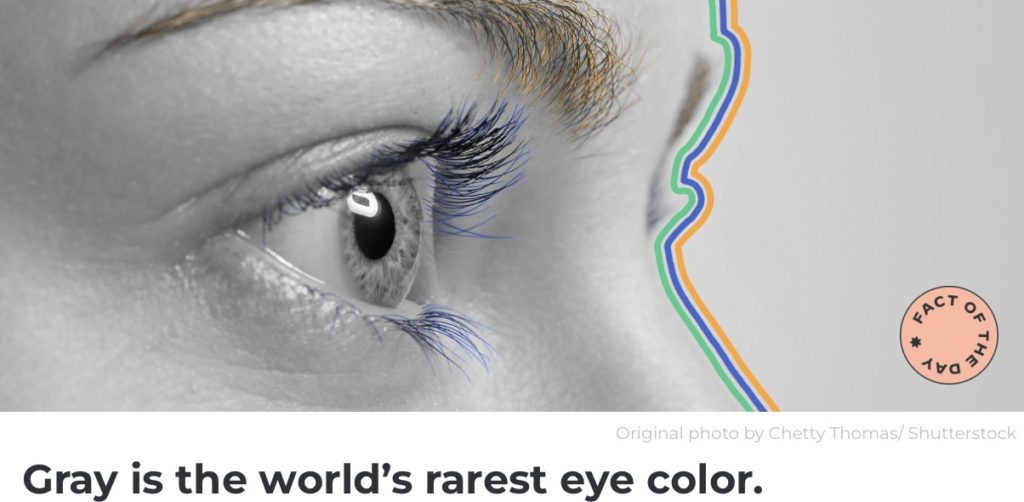Human eyes are entirely unique; just like fingerprints, no two sets are alike. But some genetic anomalies create especially unlikely “windows” to the world — like gray eyes. Eye experts once believed that human eyes could appear in only three colors: brown, blue, and green, sometimes with hazel or amber added. More recently, the ashy hue that was once lumped into the blue category has been regrouped as its own, albeit rarely seen, color. Brown-eyed folks are in good company, with up to 80% of the global population sporting the shade, while blue eyes are the second most common hue. Traditionally, green was considered the least common eye color, though researchers now say gray is the most rare, with less than 1% of the population seeing through steel-colored eyes.
Eye color is an inherited trait, meaning it’s likely members of the same family have similar eye colors. However, geneticists now believe determining a child’s eye color isn’t as simple as looking at their parents. That’s because as many as 16 genes work together to impact the final hue. Intriguingly, the eye color we have at birth isn’t necessarily the one we’ll have as adults. Most babies are born with fainter eyes that often look gray, light blue, or light brown until the melanocytes — the protein that creates color — produce enough melanin to color the iris. People with less active melanocytes typically have lighter eyes (like blue or green), while people with more melanin usually end up with brown eyes. In most cases, our final eye color begins to emerge around 3 to 6 months old, though it can continue changing until a baby’s third birthday.

